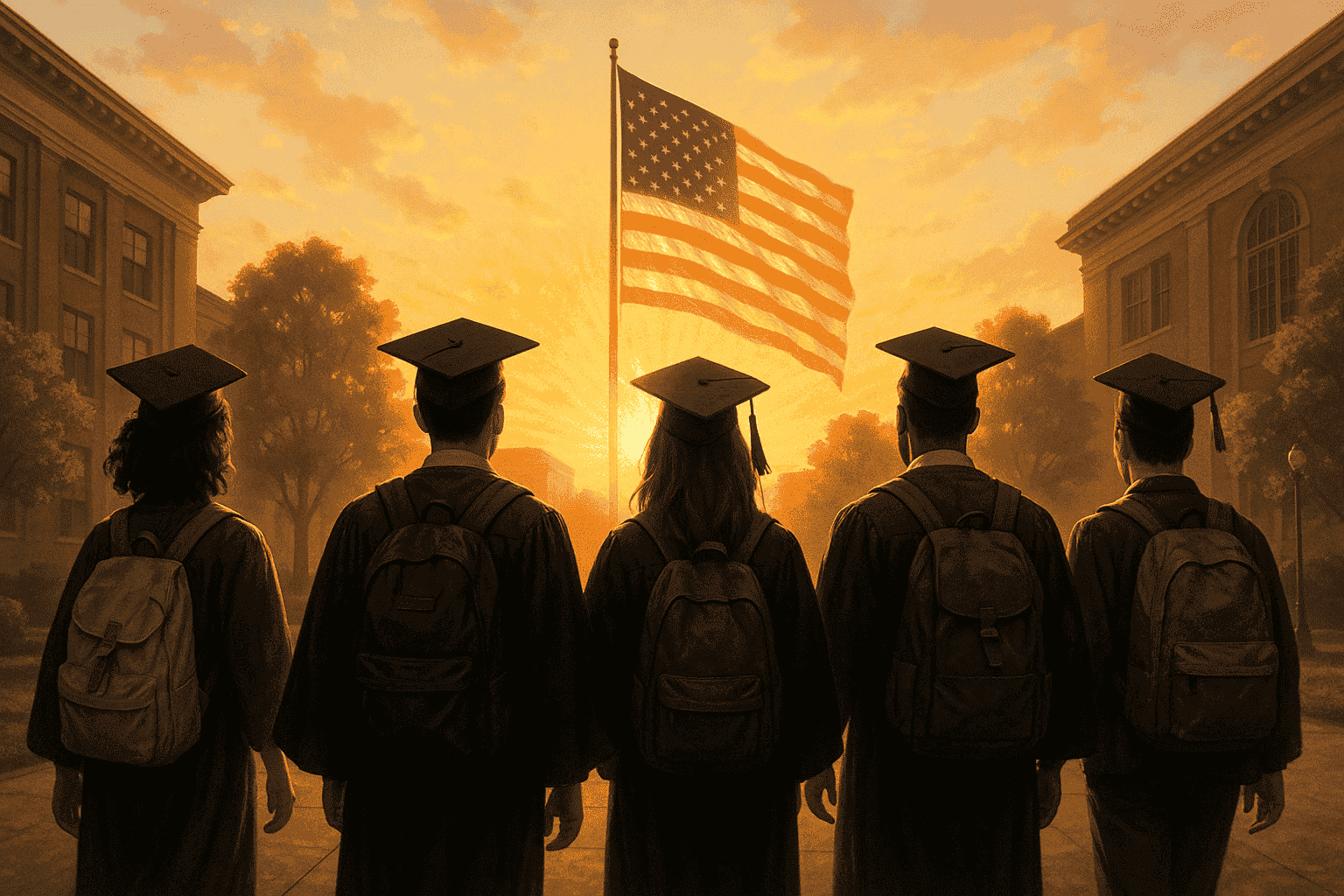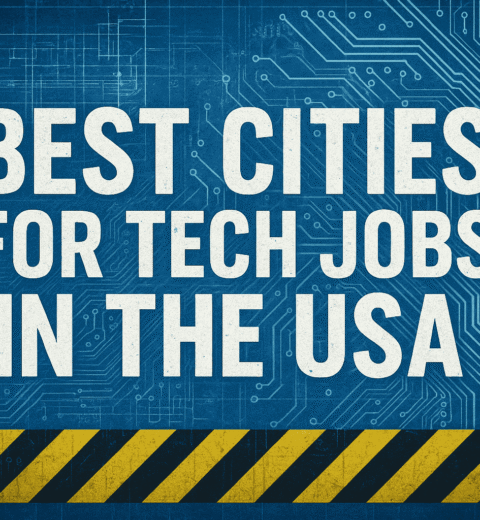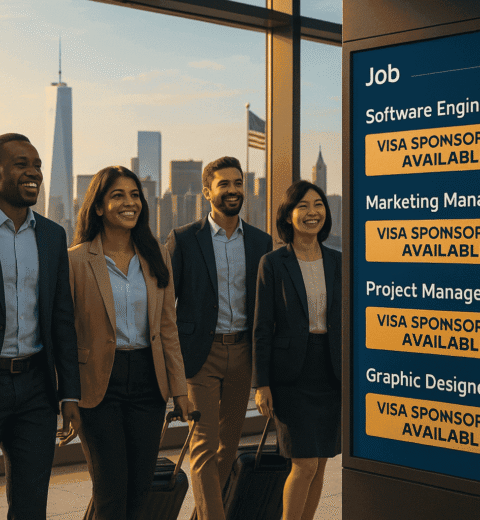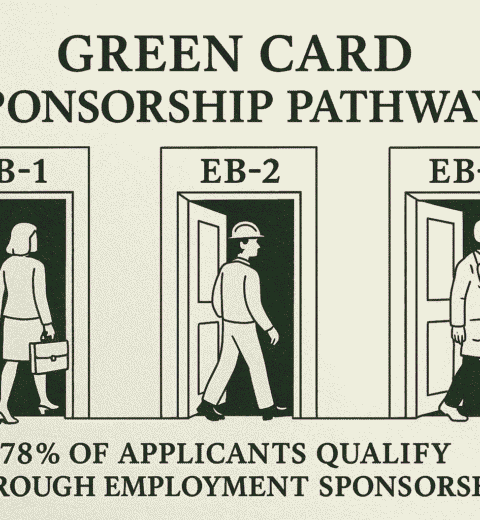Can International Students Work in the USA After Graduation? Exploring Jobs in the USA and Job Market Trends
Table of Contents
- Introduction
- Understanding Work Options for International Students in the USA
- H-1B Visa: A Pathway to Long-Term Jobs in the USA
- Job Market Trends for International Graduates in 2025
- Green Card Sponsorship Jobs in the USA
- How to Get a Work Visa for Jobs in the USA
- Challenges Faced by International Students in the US Job Market
- Tips to Secure Jobs in the USA After Graduation
- Conclusion
- FAQs
Introduction
For thousands of international students each year, the United States represents more than just a world-class education—it’s a gateway to career growth, professional development, and life-changing opportunities. However, as graduation approaches, one pressing question weighs heavily on the minds of many: “Can I actually work in the USA after completing my degree?”
The answer is a resounding yes, but the path to securing employment isn’t always straightforward. Unlike domestic students, international graduates must navigate a complex landscape of visa regulations, employer sponsorship requirements, and a highly competitive job market. The good news? With the right knowledge and strategy, countless international alumni have successfully transitioned from student visas to thriving careers in America.
Why the USA Remains a Top Destination for Global Talent
The U.S. job market continues to attract skilled professionals from around the world, thanks to its:
- Strong economy with diverse industries ranging from tech and healthcare to finance and engineering.
- High earning potential, with competitive salaries in fields like software development, data science, and healthcare.
- Innovation-driven opportunities, particularly in STEM (science, technology, engineering, and mathematics) sectors.
However, the process of securing work authorization involves several steps, and understanding these options early can make all the difference.
Key Factors That Determine Work Eligibility
Your ability to work in the U.S. after graduation depends on several factors, including
- Your Visa Status—Most international students hold an F-1 visa, which allows limited work opportunities through programs like OPT and CPT.
- Your Field of Study—STEM graduates often have extended work authorization options.
- Employer Sponsorship—Some companies are more willing to sponsor work visas (like H-1B) or even green cards.
- Current Job Market Trends—Certain industries have higher demand for international talent.
In this guide, we’ll break down each of these factors in detail, providing you with a clear roadmap to turn your American education into a long-term career. Whether you’re exploring green card sponsorship jobs in the USA or need help understanding the H-1B visa process, this article will equip you with the insights you need to succeed.
What You’ll Learn in This Guide
- Work Authorization Options—How OPT, STEM OPT, and CPT can help you gain work experience.
- Long-Term Visa Pathways—Understanding the H-1B visa and employer sponsorship.
- 2025 Job Market Outlook—Which industries are hiring international graduates?
- Overcoming Challenges—Common hurdles and how to navigate them.
- Pro Tips for Success—How to Stand Out in a Competitive Job Market.
By the end of this guide, you’ll have a clear action plan to maximize your chances of building a career in the USA after graduation. Let’s dive in!
Understanding Work Options for International Students in the USA

For international students studying in the United States on an F-1 visa, understanding work authorization options is crucial for transitioning from classroom to career. The U.S. immigration system offers several pathways that allow students to gain valuable professional experience while maintaining legal status. These opportunities not only help offset educational costs but also serve as stepping stones toward long-term employment in America’s competitive job market.
Optional Practical Training (OPT): Your First Step into the U.S. Workforce
The Optional Practical Training (OPT) program serves as the primary work authorization mechanism for F-1 visa holders. This program permits students to work in their field of study for up to 12 months following graduation, providing a critical bridge between academic life and professional employment.
Students must fulfill a number of crucial requirements in order to be eligible for OPT. First and foremost, applicants must have maintained full-time student status for at least one complete academic year before applying. The employment secured must directly relate to the student’s major field of study, ensuring that the work experience complements and enhances their educational background. Students have the flexibility to apply for either pre-completion OPT (before graduating) or post-completion OPT (after graduating), with most international students opting for the latter to maximize their work opportunities.
One of the most significant advantages of OPT is that it doesn’t require immediate employer sponsorship, giving students greater flexibility in their job search. Participants can change employers within their field of study, allowing them to explore different career paths and work environments. However, students should note that there are strict reporting requirements, including the need to update their university’s international student office about any changes in employment status or address.
STEM OPT Extension: Expanding Opportunities for Technical Fields
Students who graduate with degrees in science, technology, engineering, or mathematics (STEM) fields enjoy an exceptional advantage through the STEM OPT extension program. This valuable add-on allows qualifying graduates to extend their initial 12-month OPT period by an additional 24 months, creating a total of 36 months of work authorization in the United States.
The STEM extension comes with specific requirements designed to ensure the training’s quality and relevance. Employers must participate in the federal E-Verify program, which verifies employees’ eligibility to work in the United States. Additionally, both the student and employer must develop and follow a formal training plan that outlines how the employment will enhance the student’s academic learning through practical application.
This extended work period is particularly valuable as it gives international graduates more time to gain experience, build professional networks, and potentially transition to long-term work visas like the H-1B. The STEM extension has become increasingly important in recent years as technology companies continue to seek highly skilled international talent to fill specialized roles.
Curricular Practical Training (CPT): Gaining Experience While You Study
For students looking to gain work experience before graduation, Curricular Practical Training (CPT) offers an excellent opportunity. CPT authorization allows F-1 students to work off-campus while still enrolled in their degree program, typically through internships, cooperative education programs, or other work experiences that form an integral part of the established curriculum.
Unlike OPT, CPT requires approval from both the academic institution and the Designated School Official (DSO) before employment can begin. The work must be directly related to the student’s major and often earns academic credit. Many universities have specific courses designed to accompany CPT experiences, ensuring that the practical work complements classroom learning.
One crucial aspect of CPT that students must understand is the potential impact on future OPT eligibility. Students who use 12 months or more of full-time CPT become ineligible for OPT, though part-time CPT (20 hours or less per week) doesn’t count toward this limit. Careful planning with academic advisors and international student offices can help students maximize their CPT opportunities without jeopardizing future work options.
These work authorization programs collectively provide international students with valuable pathways to gain U.S. work experience, develop professional skills, and potentially transition to long-term employment in the United States. Understanding the nuances of each option and planning accordingly can make a significant difference in a student’s post-graduation career trajectory.
H-1B Visa: A Pathway to Long-Term Jobs in the USA
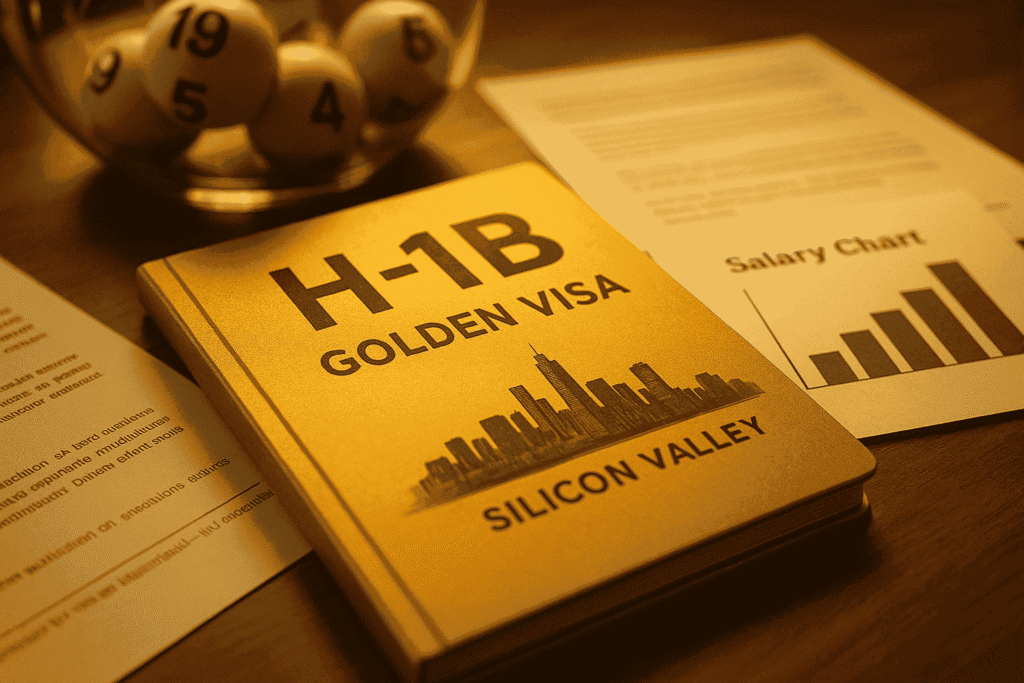
For countless international graduates, the H-1B visa represents the golden ticket to building a sustainable career in America. As the most sought-after work visa for skilled professionals, this program opens doors to rewarding opportunities across various industries while providing a pathway to potential permanent residency.
Understanding the H-1B Visa Program
The H-1B is a non-immigrant visa category designed for foreign workers in specialty occupations that typically require at least a bachelor’s degree or its equivalent. What makes this visa particularly attractive is its dual-intent nature—while technically temporary, it allows holders to pursue green card sponsorship simultaneously. The visa initially grants a three-year stay, with the possibility of extension up to six years, giving recipients ample time to establish themselves professionally in the U.S. job market.
Who Qualifies for an H-1B Visa?
Applicants must fulfill a number of essential requirements in order to be eligible:
- Possess at least a bachelor’s degree or higher in their field of specialization
- Secure employment with a U.S. company willing to sponsor the visa.
- Work in a position that qualifies as a “specialty occupation” (typically including fields like IT, engineering, medicine, finance, and architecture).
- Receive compensation that meets or exceeds the prevailing wage for the occupation in the specific geographic area.
Navigating the Competitive Application Process
The H-1B process involves multiple steps that require careful coordination between the applicant and sponsoring employer:
- Labor Condition Application (LCA): The employer must first file this document with the Department of Labor, certifying they will pay the required wage and that employment won’t adversely affect working conditions for U.S. workers.
- Petition Filing: Once the LCA is approved, the employer submits Form I-129 to USCIS during the designated filing period, typically beginning April 1st each year.
- The H-1B Lottery: With demand consistently exceeding supply, USCIS uses a computer-generated random selection process when they receive more petitions than the annual cap allows. For the 2024 fiscal year, the regular cap remains at 65,000 visas, with an additional 20,000 reserved for applicants holding advanced degrees from U.S. institutions.
- Premium Processing Option: For an additional fee, employers can request expedited processing (15 calendar days), which can be particularly valuable for candidates with tight timelines.
Current Challenges in the H-1B Landscape
While the H-1B remains a viable option, applicants should be aware of several evolving challenges:
Intense Competition: Recent years have seen application numbers far exceeding available visas. In 2023, USCIS received over 483,000 registrations for just 85,000 available slots, creating intense competition.
Changing Regulations: Policy shifts under different administrations have led to fluctuating approval rates and processing times. The introduction of the electronic registration system in 2020 streamlined the lottery process but also made it easier for more applicants to participate.
Employer Reluctance: Some companies hesitate to sponsor H-1B candidates due to the associated costs (filing fees often exceed $5,000 per application) and uncertainty about selection in the lottery.
Geographic Limitations: Certain regions and industries (particularly tech hubs like Silicon Valley) see much higher concentrations of H-1B workers, making sponsorship more common in these areas.
Strategies to Improve Your H-1B Prospects
Given these challenges, international graduates should consider several approaches to strengthen their candidacy:
- Target H-1B Dependent Employers: Certain industries (especially technology and healthcare) have established sponsorship programs.
- Consider Cap-Exempt Organizations: Universities, non-profit research organizations, and government research facilities aren’t subject to the annual cap.
- Explore Alternative Visas: In some cases, the O-1 (extraordinary ability) or L-1 (intracompany transfer) visas may be options.
- Begin Early: Ideally, start visa discussions with potential employers months before the April filing deadline.
For those navigating this complex process, our comprehensive guide on how to get a work visa for jobs in the USA provides detailed step-by-step advice to maximize your chances of success.
The H-1B visa remains one of the most reliable pathways for international graduates to establish long-term careers in the United States. While the process can be competitive and complex, proper preparation and strategic planning can significantly improve your odds of securing this valuable work authorization.
Job Market Trends for International Graduates in 2025
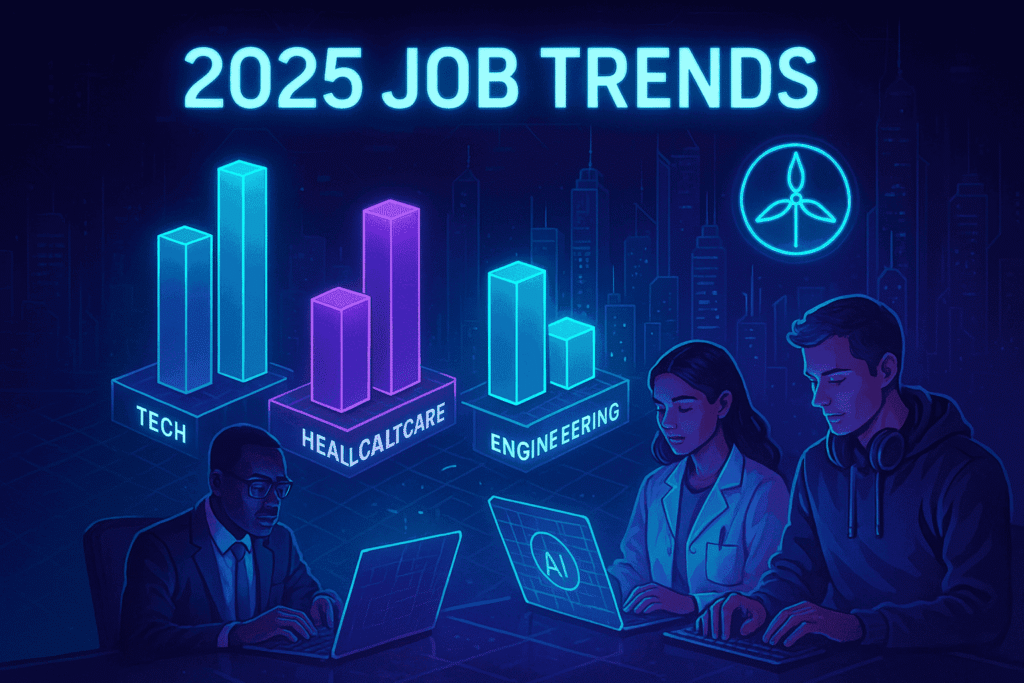
As we approach 2025, the U.S. job market continues to evolve, presenting both exciting prospects and new challenges for international students seeking employment after graduation. Understanding these job market trends is crucial for foreign graduates aiming to secure high-paying jobs in the USA with visa sponsorship. This comprehensive analysis will help you identify the most promising career paths and emerging fields where international talent is in highest demand.
High-Demand Industries Offering Visa Sponsorship
For international graduates wondering how to get a job in the USA after graduation, these four sectors currently dominate the sponsorship landscape:
1. Technology & IT: The Golden Pathway for STEM Graduates
The tech industry remains the most welcoming sector for international students, particularly those with degrees in computer science, data analytics, or cybersecurity. Major tech hubs like Silicon Valley, Seattle, and Austin continue to actively recruit software developers, data scientists, and cybersecurity experts through H-1B visa programs. Prominent businesses like Google, Amazon, and Microsoft are among the top sponsors of H-1B visas in 2025 because they have strong immigration assistance systems in place.
2. Healthcare: America’s Growing Need for International Talent
With an aging population and ongoing physician shortages, the healthcare sector offers exceptional opportunities for international medical graduates. Positions ranging from registered nurses to specialized physicians and medical researchers are in critical demand across the country. Many hospitals and research institutions actively sponsor visas, particularly for specialties where domestic supply falls short. The pandemic has only accelerated this trend, creating what many consider a golden era for healthcare careers in the USA for foreign workers.
3. Engineering: Building America’s Future
Civil, mechanical, and electrical engineers with international degrees find strong demand in infrastructure projects, manufacturing, and energy sectors. The recent infrastructure bill has created thousands of engineering jobs with visa sponsorship USA opportunities, particularly in renewable energy and transportation projects. International graduates should pay special attention to firms working on green energy initiatives, as these align with both current political priorities and long-term market trends.
4. Finance & Business Analytics: The Data-Driven Revolution
International viewpoints are becoming more and more valued in finance and analytics professions on Wall Street and in corporate America. Financial analysts, risk management specialists, and business intelligence consultants with strong quantitative skills can find excellent opportunities, particularly in major financial centers like New York and Chicago. The growing field of fintech has created particularly strong demand for professionals who combine financial expertise with technical skills.
Emerging Job Roles with Strong Visa Potential
Beyond these traditional strongholds, several cutting-edge fields are creating exciting new opportunities for international graduates:
Artificial Intelligence & Machine Learning Specialists
As AI transforms nearly every industry, companies are scrambling to recruit top talent in machine learning and artificial intelligence. These positions not only command premium salaries but also enjoy relatively high visa approval rates due to their specialized nature. International students with AI expertise should focus their job search on both tech giants and innovative startups in this space.
Renewable Energy Engineers
The push toward sustainability has created booming demand for engineers specializing in solar, wind, and other renewable technologies. Many of these renewable energy jobs in America qualify for special visa consideration under national interest waivers, making them particularly attractive options for international graduates.
Digital Marketing Experts with Global Perspective
As businesses expand their online presence globally, they increasingly value marketers who understand multiple cultural contexts. International students with digital marketing expertise and language skills can position themselves as ideal candidates for multinational corporations looking to expand their international reach.
Strategic Advice for International Job Seekers
To maximize your chances in this competitive landscape:
- Focus on developing skills that are both in high demand and relatively scarce in the domestic workforce.
- Target industries with historically high H-1B approval rates.
- Consider geographic locations with concentrations of visa-friendly employers.
- Build a professional network through internships and campus recruiting events.
- Stay informed about changing immigration policies that might affect your target industry.
For those specifically interested in technology roles, our guide to green card sponsorship jobs in tech provides additional specialized advice for navigating this competitive field.
The 2025 job market for international graduates presents both challenges and exceptional opportunities. By focusing on these high-demand sectors and emerging roles, maintaining flexibility in your job search, and leveraging all available resources, you can significantly improve your chances of launching a successful U.S. career after graduation. Remember that many of today’s most successful international professionals started exactly where you are now—with a degree, ambition, and the right strategy for navigating the U.S. job market.
Green Card Sponsorship Jobs in the USA
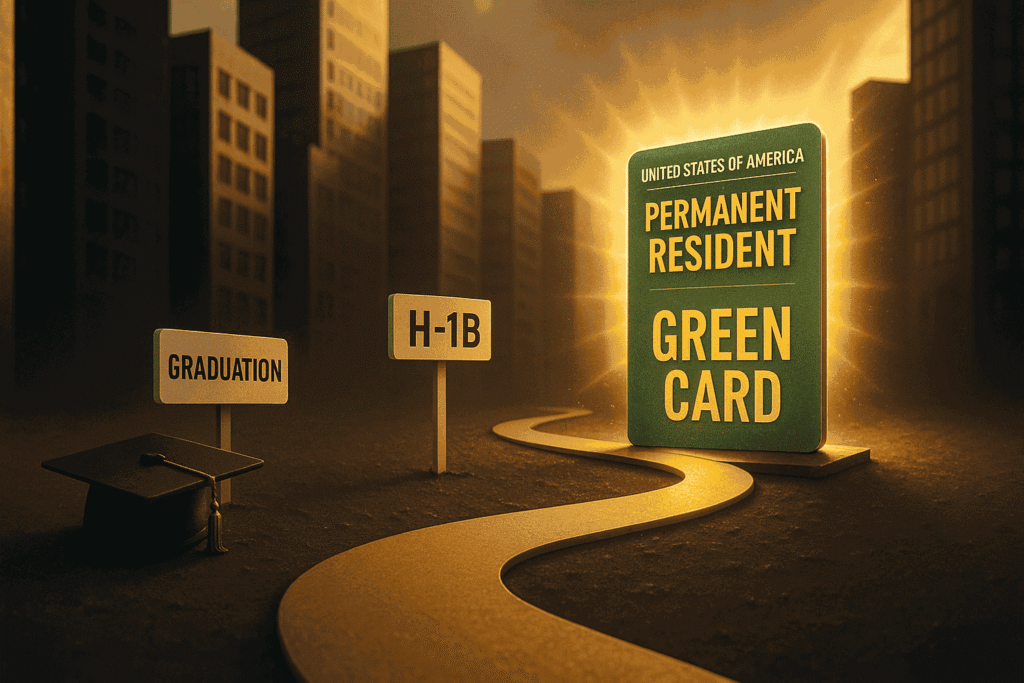
For international professionals dreaming of building a permanent life in America, securing green card sponsorship jobs in the USA represents the ultimate career milestone. Unlike temporary work visas, employer-sponsored green cards offer the life-changing opportunity to become a lawful permanent resident. As we look ahead to 2025, understanding the various employment-based pathways has never been more critical for skilled foreign workers.
Understanding Employment-Based Green Card Sponsorship
The U.S. offers several employment-based immigration pathways, with the EB-2 and EB-3 categories being the most accessible routes for qualified professionals. These programs allow U.S. employers to sponsor foreign workers for permanent residency, but the process varies significantly depending on your qualifications and occupation.
EB-2 National Interest Waiver (NIW) Jobs have emerged as particularly valuable options for advanced degree holders and exceptional professionals. What makes the NIW unique is that it allows certain applicants to bypass the typical job offer requirement if they can demonstrate their work benefits the national interest. This pathway has become especially popular among research scientists, healthcare professionals, and tech innovators whose contributions could significantly advance their field in the United States.
For those wondering how to get employer green card sponsorship, the more conventional EB-3 skilled worker category serves as the primary route for professionals holding bachelor’s degrees or equivalent experience. Unlike the NIW, EB-3 sponsorship requires a permanent job offer, and the employer must complete the rigorous PERM labor certification process to prove no qualified American workers are available for the position.
Industry-Specific Sponsorship Opportunities in 2025
The likelihood of obtaining green card sponsorship varies dramatically by industry. Currently, these sectors lead in sponsorship opportunities:
Tech companies that sponsor green cards dominate the sponsorship landscape, with Silicon Valley giants and established IT firms routinely filing petitions. The ongoing talent shortage in specialized tech fields makes companies more willing to navigate the complex sponsorship process for qualified candidates.
Healthcare Green Card Sponsorship Jobs, particularly for nurses and physicians, continue to see exceptional demand. The pandemic exposed critical staffing shortages that persist today, making healthcare one of the most reliable sectors for sponsorship seekers. Many hospitals even work with immigration attorneys to streamline the process for international medical staff.
Engineering jobs with green card sponsorship remain strong, especially in infrastructure, energy, and manufacturing sectors. The recent infrastructure bill has created thousands of positions where employers are actively seeking international talent to fill specialized roles.
Navigating the Sponsorship Process: What You Need to Know
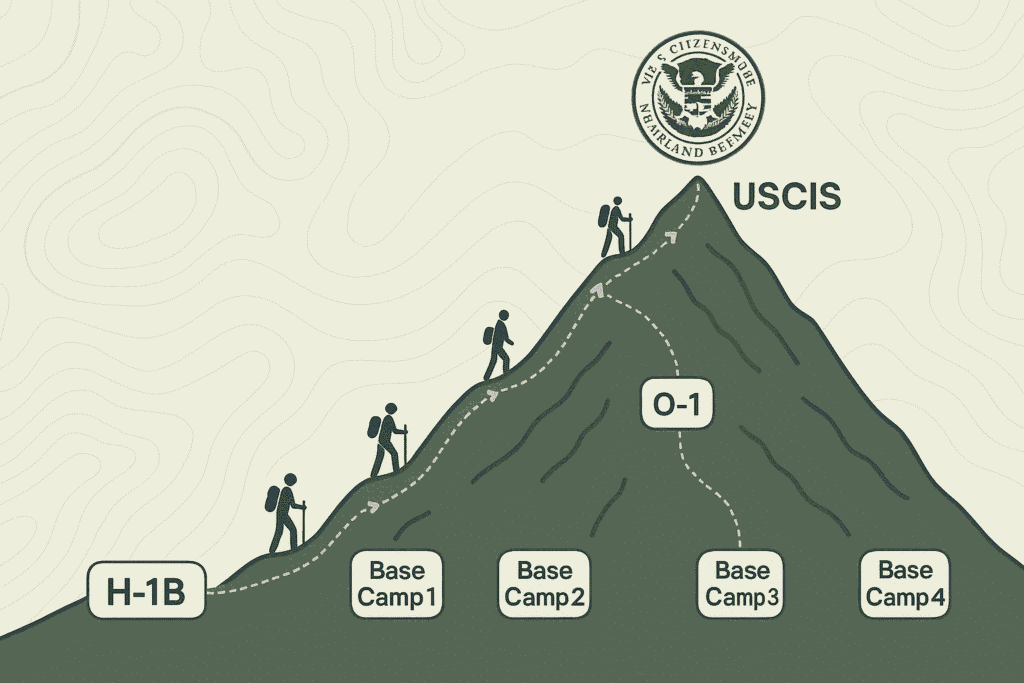
The journey from temporary worker to permanent resident typically follows these steps:
- Securing Employer Commitment: Unlike H-1B visas, green card sponsorship requires long-term employer investment.
- Prevailing Wage Determination: Employers must prove they’re offering competitive compensation.
- PERM Labor Certification: The most time-consuming step, often taking 12-18 months
- I-140 Petition: Establishing the immigrant petition
- Adjustment of Status: Final step when visa numbers become available
For those comparing EB-2 vs. EB-3 green card options, it’s important to note that EB-2 typically has shorter wait times but higher qualification requirements. The priority dates for employment-based green cards fluctuate monthly, making regular consultation of the Visa Bulletin essential for timing your application.
Strategic Advice for Securing Sponsorship
To improve your chances of landing one of these coveted positions:
- Target industries with proven sponsorship histories.
- Consider regional variations—certain cities have higher concentrations of sponsorship-friendly employers.
- Build your case as an exceptional candidate, particularly for NIW petitions.
- Understand that sponsorship timelines often span several years.
- Consult our comprehensive guide on Green Card Sponsorship Jobs in the USA 2025 for current processing times and requirements.
The landscape for green card sponsorship jobs USA in 2025 continues to evolve, with certain industries and occupations offering clearer pathways than others. By focusing on high-demand sectors, understanding the complex requirements, and strategically positioning yourself in the job market, you can significantly improve your chances of obtaining this life-changing opportunity. Remember that persistence and preparation are key—many who start this journey ultimately succeed in making America their permanent home.
Challenges Faced by International Students in the US Job Market
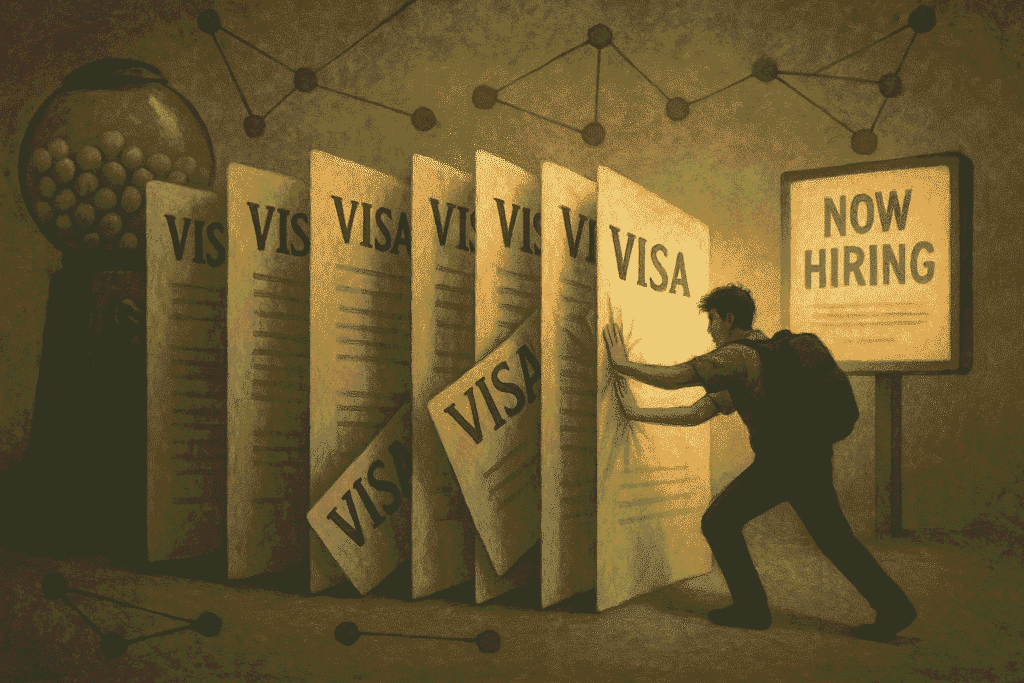
For thousands of ambitious international students, the American dream often comes with unexpected hurdles when transitioning from campus to career. While the U.S. job market offers incredible opportunities, foreign graduates face unique challenges that require strategic navigation. Understanding these obstacles is the first step toward developing effective solutions for your OPT to H-1B transition difficulties.
1. The Visa Sponsorship Dilemma: Navigating Complex Immigration Policies
The most formidable challenge remains the H-1B visa challenges for international students due to the annual lottery system. The odds can be depressing because application volumes routinely outnumber available seats (in 2023, there were almost 480,000 registrations for just 85,000 visas). This employer reluctance to sponsor visas stems from several factors:
- Financial Burden: Sponsorship costs often exceed $5,000 per application.
- Uncertain Outcomes: Even after investment, selection isn’t guaranteed.
- Processing Delays: Current backlogs extend wait times significantly.
Many students don’t realize that alternative visas to H-1B for students exist, including the O-1 for extraordinary ability or TN status for Canadian/Mexican professionals. Exploring these options early can provide crucial backup plans when facing US work visa problems for graduates.
2. The Hidden Bias: Overcoming Employer Preferences
A less discussed but equally significant barrier is the US job market bias against foreign workers. Many employers automatically filter out applications requiring sponsorship due to
- Misconceptions about legal complexities
- Preference for candidates with unlimited work authorization
- Concerns about long-term retention
This creates one of the most frustrating international student employment barriers—being equally or more qualified than domestic candidates but excluded from consideration. Learning how to explain visa status to US employers effectively can help overcome this initial resistance.
3. The Networking Gap: Building Professional Relationships from Scratch
Many international students underestimate the cultural barriers in American job searches, particularly the importance of networking. Unlike some educational systems where merit alone determines success, U.S. careers are often built through
- Alumni connections
- Industry events
- Informal coffee meetings
- Personal referrals
Developing effective networking strategies for foreign graduates requires understanding unspoken cultural norms and proactively building relationships. Many students find success through
- University career centers (particularly those at universities with the best career support for internationals)
- Professional associations in their field
- Cultural/ethnic professional networks
- Strategic LinkedIn engagement
Turning Challenges Into Opportunities
While these job search difficulties for F-1 students are real, they’re not insurmountable. Successful international graduates often share these strategies:
- Targeting sponsorship-friendly employers (tech giants, multinational corporations, universities)
- Focusing on high-demand skills where employers face talent shortages
- Developing strong communication skills to overcome cultural gaps
- Starting the job search as soon as possible—ideally, six to nine months before to graduation
- Considering locations like US cities most friendly to international job seekers
For those facing setbacks, remember that many successful professionals initially struggled with the same H-1B lottery odds in 2025 you’re facing today. The distinction between those who succeed and those who give up is frequently determined by persistence, readiness, and flexibility.
If you’re currently navigating these challenges, our guide on how to overcome visa sponsorship rejections provides actionable strategies to improve your chances in this competitive landscape. Remember, every international professional working in America today once faced these same obstacles and found ways to overcome them.
Tips to Secure Jobs in the USA After Graduation

For international students wondering how to get a job in the USA after graduation, the path to employment requires careful planning and strategic execution. The American job market offers tremendous opportunities, but navigating it successfully demands an understanding of both the formal processes and unwritten rules that govern hiring decisions. These best job search strategies for F-1 students have helped thousands of graduates transition from student visas to rewarding careers.
1. Begin Your Job Search Early: The OPT Advantage
One of the most crucial OPT job search tips for 2025 is to start your employment hunt well before graduation. The Optional Practical Training program allows you to work for up to 12 months (or 36 months for STEM graduates), but the application process takes time. Ideally, you should:
- Consult your DSO about the best time to apply for OPT prior to graduation, which is usually ninety days prior to program completion.
- Prepare your resume for American employers (focusing on accomplishments rather than just responsibilities).
- Begin identifying top companies hiring OPT students in 2025 in your field.
Many students make the mistake of waiting until after graduation to start their search, putting themselves at a significant disadvantage in the competitive U.S. job market.
2. Maximize University Career Services: Your Hidden Advantage
Most international students underutilize their school’s career center, missing out on one of the most valuable resources for how to use university career services effectively. These offices offer:
- Exclusive job postings from employers specifically seeking international talent
- Resume and cover letter reviews tailored to American standards
- Practice interviews with cultural adaptation coaching
- Invitations to career fairs where companies actively recruit graduates
When preparing for how to prepare for US job fairs as an international student, remember to research attending companies’ sponsorship policies beforehand and prepare concise explanations of your work authorization status.
3. Build Your Professional Network Strategically
Effective networking strategies for international students USA can make the difference between endless applications and meaningful opportunities. Consider these approaches:
- Connect with alumni from your university working in your target industry.
- Join professional associations related to your field.
- Engage with professionals through informational interviews.
- Optimize your LinkedIn profile with keywords recruiters search for.
Many successful graduates credit their breakthrough to alumni network success stories for job search connections that opened doors to unadvertised positions. When reaching out, personalized cold email templates for international job seekers that demonstrate your research about the recipient tend to get the best responses.
4. Target the Right Employers: Understanding Sponsorship Landscapes
Identifying H-1B sponsorship companies’ lists of candidates should be a priority in your search. Focus on:
- Tech companies that hire international graduates (Google, Microsoft, Amazon)
- Consulting firms that sponsor H-1B visas (Deloitte, PwC, EY)
- Industries with proven sponsorship histories (healthcare jobs for F-1 visa students, engineering jobs with visa sponsorship)
Research indicates that states with the most H-1B sponsorships, like California, Texas, and New York, offer the highest concentration of opportunities. Similarly, university towns with good job opportunities often have employers familiar with international student hiring.
5. Develop a Contingency Plan: Alternatives to Consider
Even with perfect preparation, some students face the reality of what to do if the OPT job search fails. Savvy graduates prepare backup options.
- If H-1B is not chosen, look into other visa options (O-1, L-1, or even pursuing advanced degrees).
- Consider positions at the most international-friendly jobs in the USA that may have different hiring patterns.
- Look for opportunities at multinational companies with overseas offices that could lead to eventual U.S. transfers.
Remember that many successful professionals faced initial rejections before finding the right opportunity. Persistence combined with strategic adjustments to your approach often leads to success.
By implementing these US job hunt tips for foreign graduates, you’ll position yourself strongly in the competitive American job market. Each step builds upon the others, creating a comprehensive strategy that addresses both the practical and psychological aspects of the international student job search. For those currently navigating this process, remember that thousands have walked this path before you—with the right approach, you can join them in building a successful career in the United States.
Conclusion

For international students wondering if international students can work in the USA after graduation, the answer is a resounding yes—but success requires strategic planning and informed decision-making. The journey from student visa to professional career in America follows well-established USA work visa pathways for graduates, with multiple options available depending on your field, qualifications, and long-term goals.
Understanding Your Work Authorization Options
The most common transitioning from OPT to green card process begins with Optional Practical Training (OPT), which serves as a crucial bridge between academia and professional employment. This 12-month period (extendable to 36 months for STEM graduates) allows you to:
- Gain valuable U.S. work experience
- Build professional networks
- Demonstrate your value to potential sponsors
- Explore different career paths within your field
Many students successfully use this time to position themselves for the next step—whether that’s H-1B sponsorship, employer-based green card applications, or other long-term work options in America.
Navigating the Visa Process Successfully
The OPT to H-1B to green card process represents the most common pathway, but it’s far from the only option. Understanding the nuances of each stage is crucial for maintaining legal status while working and maximizing your career potential.
- OPT Period: Your opportunity to prove your professional worth
- H-1B Application: The competitive lottery system for specialty occupations
- Green Card Sponsorship: The ultimate goal for many international professionals
For those wondering how to stay in the USA after graduation beyond these traditional routes, alternatives like the O-1 visa (for extraordinary ability) or L-1 visa (for intracompany transfers) may be worth exploring, especially if you face challenges with the H-1B lottery.
Building a Sustainable Career in America
The question of how to build a career in the USA as a foreigner goes beyond just securing work authorization. Successful international professionals typically focus on:
- Developing specialized, in-demand skills
- Cultivating strong professional networks
- Understanding American workplace culture
- Demonstrating unique value to employers
- Planning strategically for long-term career options for international students
Many international student career success stories share common themes—early preparation, persistence through challenges, and leveraging every available resource. The finest results are typically obtained by those who approach their job journey in the United States with both short-term strategies and long-term vision.
Planning for the Future
As you consider life after graduation for international students, it’s wise to think beyond immediate employment. Key considerations include:
- When to start the green card process after graduation (typically after establishing yourself with an employer)
- What to do after OPT ends successfully if you haven’t secured H-1B status
- How to maximize your OPT period to build your professional profile
- Balancing visa requirements and career goals as they evolve
For those dreaming of settling permanently in the USA after studies, the path requires patience and perseverance, but thousands of international graduates achieve this goal each year through careful planning and execution of the most successful visa strategies for graduates.
Final Thoughts: Turning Opportunity into Reality
While the process may seem daunting, remember that the U.S. was built by immigrants who turned challenges into opportunities. By understanding the system, preparing thoroughly, and remaining adaptable, you can join the ranks of international students who have successfully built rewarding careers and lives in America. The key lies in viewing each work authorization option not as an obstacle, but as a stepping stone toward your ultimate professional goals.
For those currently navigating this journey, take heart—with the right approach and mindset, your American dream is absolutely achievable. Every successful international professional working in the U.S. today once stood where you are now, wondering how to turn their education into a lasting career. Their stories prove that with preparation, persistence, and the right strategy, you can too.
FAQs

1. Can foreign students start working in the United States as soon as they graduate?
Yes, through Optional Practical Training (OPT), which allows F-1 visa holders to work for 12 months (or 36 months for STEM graduates) without needing an additional work visa. This gives you valuable time to gain U.S. work experience while exploring long-term visa options like the H-1B.
2. What’s the difference between OPT and CPT for international students?
Curricular Practical Training (CPT) is for work experience during your degree (like internships), while OPT is for pre- or post-graduation employment. A key distinction is that using 12+ months of full-time CPT makes you ineligible for OPT, so careful planning is essential.
3. How does the lottery system for H-1B visas operate?
Each April, USCIS accepts petitions for 85,000 H-1B visas (65,000 general + 20,000 for U.S. master’s degree holders). If applications exceed this cap (which they typically do), selections are made by random lottery. The entire process from employer filing to approval typically takes 3-6 months.
4. Which industries sponsor the most H-1B visas for international graduates?
The tech sector dominates H-1B sponsorships, with companies like Amazon, Google, Microsoft, and Apple filing thousands of petitions annually. Consulting firms (Deloitte, Accenture), financial services (JPMorgan), and healthcare organizations also actively sponsor international talent.
5. What are my options if I don’t get selected in the H-1B lottery?
Alternatives include pursuing an advanced degree to extend OPT eligibility, transferring to an L-1 visa if working for a multinational company, applying for an O-1 visa (extraordinary ability), or exploring cap-exempt employers like universities and research organizations.
6. How can international students improve their chances of getting hired in the USA?
Building a strong professional network through LinkedIn and alumni connections, gaining U.S. internship experience, developing specialized technical skills, and targeting companies with established visa sponsorship programs can significantly improve your job prospects.
7. When should international students start their job search?
Ideally 6-9 months before graduation. For OPT, you can apply 90 days before your program end date, but employers often hire months in advance. Starting early gives you time to navigate the unique challenges international students face in the U.S. job market.
8. Do all jobs qualify for OPT authorization?
No, OPT employment must be directly related to your major field of study. You’ll need to demonstrate this connection in your application, and your university’s international student office must approve the position before you begin working.
9. Can international students work remotely for companies outside the USA on OPT?
Generally no—OPT employment must be with a U.S.-based employer. There are limited exceptions for certain contract work, but you should always consult with your university’s international student office before accepting any remote positions.
10. How does the STEM OPT extension work?
STEM graduates can extend their initial 12-month OPT by 24 additional months if they 1) work for an E-Verify enrolled employer, 2) have a degree in a qualifying STEM field, and 3) submit a formal training plan to USCIS. This provides valuable extra time to secure long-term sponsorship.
11. What salary should international students expect in OPT positions?
OPT salaries vary by field but should meet industry standards. Tech roles often pay $70,000-$120,000, while business positions average $50,000-$80,000. Remember that employers cannot pay you less than domestic workers just because you’re on OPT.
12. Can I change jobs while on OPT?
Yes, you can change employers during OPT as long as each new position relates to your field of study. You must report employment changes to your university’s international office within 10 days, and any unemployment periods count against your 90-day limit (150 days for STEM OPT).
13. How difficult is it to get employer green card sponsorship?
It varies by industry and company. Large tech firms regularly sponsor EB-2/EB-3 green cards for high-performing employees, while smaller companies may be reluctant due to costs and complexity. The process typically takes 1-3 years from initiation to approval.
14. What are the best cities for international students seeking jobs?
Major tech hubs (San Francisco, Seattle, Austin), financial centers (New York, Chicago), and healthcare hubs (Boston, Houston) offer the most opportunities. However, consider cost of living and competition—sometimes smaller cities with growing industries can be better options.
15. Can I start my own business on OPT?
Yes, you can start a business on OPT if it’s directly related to your degree and you can show you’re actively engaged in running it. However, self-employment comes with additional documentation requirements and scrutiny, so consult with an immigration attorney first.

